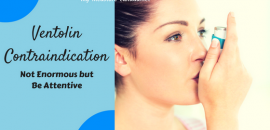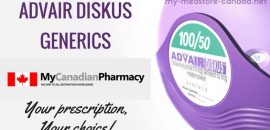Common Methods of Asthma Treatment
Asthma is a deteriorating disorder of top airways. It is in the majority of cases a chronic disease but there are several methods to get rid of an asthma attack and achieve the recovery. We decided to look through various approaches to asthma treatment.
How To Treat Asthma?
The first method is drug-free therapy. It includes the following steps:
- Elimination (contact exception) of allergens: to exclude from diet products, on which the person has an allergy (citruses, chocolate, dairy products, etc.), and also contact with possible non- food allergens (pollen of plants, medicines, hair of animals). Not to get pets in case the person has multiple allergies (for example, on foodstuff, medicines).
- Daily damp cleaning in premises.
- Whenever it is possible to replace a residence (climate). Sea climate with moderate humidity influences well.
- Adequate physical activity including:
- walking in moderate rhythm;
- swimming;
- respiratory gymnastics (by various techniques: inflation of balls, blowing of air through a straw) which is directed on the training of respiratory muscles.
- Visit “Asthma schools” where doctors in a form, available to the patient, tell about disease features, make recommendations about the mode, physical activity, acquaint with a range of medicines and subtleties of their intake, train in instructions for use inhalers (such as Ventolin, Advair, and Xopenex).
The second method is medicamentous therapy where all preparations for bronchial asthma treatment can be divided into 3 groups.
- Preparations of “ambulance” — the means which are quickly expanding a bronchial tube. They are used for elimination of a bronchial asthma attack:
- beta-agonists of short action;
- anti-cholinergic of short action;
- dimethylxanthine of short action (have a weak effect and the expressed collateral reactions therefore now are used more and more seldom);
- glucocorticosteroid hormone intravenously or in oral tablets (are used at the prolonged attack of bronchial asthma which isn’t giving in to an action of the above preparations).
The main preparations for removal of an attack are Beta-2-agonist of a short action, anti-cholinergic of short action and their combination.
They are issued in the form of aerosol inhalers. These means always have to be near the person having asthma (on a bed stand, in a bag, etc.). besides, you may order all these drugs via My Canadian Pharmacy, an online store shipping drugs internationally.
Preparations quickly remove an attack of bronchial asthma by spasm elimination of bronchial tube and reduction of its puffiness. These medicines only eliminate symptoms but don’t treat a disease completely. Therefore it is possible to use them as the only preparation only for the easy course of bronchial asthma. At heavier current they have to supplement basic anti-inflammatory preparations and be used “on requirement”, that is only for removal of an attack.
It is possible to use them no more than 6-8 times a day, further sensitivity to them decreases that can lead to the asthmatic status (a complication of bronchial asthma, represents a heavy prolonged attack).
- Disease-modifying agents are the main preparations for the treatment of bronchial asthma. They are the following:
- Glucocorticosteroid hormones in tablets (in an aggravation) and in an inhalation form.
- Inhalation forms of glucocorticoids are the main preparations for bronchial asthma treatment as they are capable to suppress an inflammation in the bronchial tree.
- Many patients are afraid to consume hormonal preparations as there is an opinion on a large number of their side effects.
Serious side effects (diabetes, an increase of arterial blood pressure, osteoporosis (the decrease in mass of bone and violation of bone tissue structure leading to an increase in the fragility of bone and risk of developing of fracture) can cause the hormones entered into an organism in the form of tablets or injectable.
- Inhalation forms of hormones in the average appointed doses are deprived of these side effects as operate on a point of application, namely, in the bronchial tree.
As bronchial asthma being chronic inflammation, these preparations demand long, continuous intake. It is possible to estimate full action of these preparations only after 3 months of their application. Refusal of their reception can transfer a disease into a heavier current. From side effects of inhalation hormones forms, it is possible to cause voice hoarseness and candidiasis of oral cavity (the fungal disease, is characterized by the emergence of a white raid on the tongue, a mucous membrane of an oral cavity), which are easy for preventing rinsing of mouth after each inhalation. - Blockers of leukotriene system are one of the types of the basic preparations suppressing an inflammation in the bronchial tree. However, in general, the effect is much less, than at inhalation of glucocorticosteroids. They can be used as an addition to inhalation hormones.
- Cromones (stabilizers of membranes of corpulent cells) are one of the types of the basic preparations suppressing an inflammation in the bronchial tree. However, in general, the effect is much less, than at inhalation of glucocorticosteroids. They are applied generally at not severe bronchial asthma.
- Blockers (antibodies to) IgE are appointed only in an aggravation to persons with allergic bronchial asthma and the high IgE level in blood in the absence of effect from hormonal therapy.







